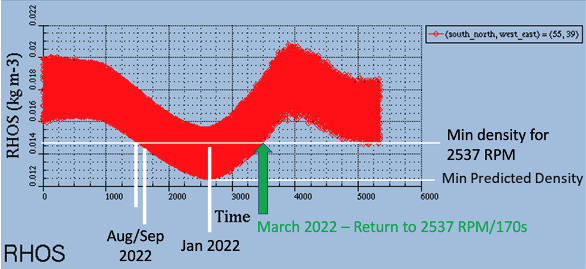Mars Atmosphere Density Model

| Credit | NASA/JPL-Caltech |
|---|---|
| Language |
|
Models for the seasonal variation in atmospheric density on Mars between summer (low density) and winter (higher density) predict that air density will be high enough in late March for NASA’s Mars Ingenuity Helicopter to return to its original RPM. Since September, the helicopter’s rotors have been operating an increased RPM of 2,700 – up from 2,537 RPM during Ingenuity’s first 13 flights. The Ingenuity team will use observations from Perseverance’s weather station, MEDA, to confirm the true air density on Mars before making the change.
The Ingenuity Mars Helicopter was built by NASA’s Jet Propulsion Laboratory in Southern California, which also manages the project for NASA Headquarters. It is supported by NASA’s Science Mission Directorate. NASA’s Ames Research Center in California’s Silicon Valley, and NASA’s Langley Research Center in Hampton, Virginia, provided significant flight performance analysis and technical assistance during Ingenuity’s development. AeroVironment Inc., Qualcomm, and SolAero also provided design assistance and major vehicle components. Lockheed Martin Space designed and manufactured the Mars Helicopter Delivery System.

